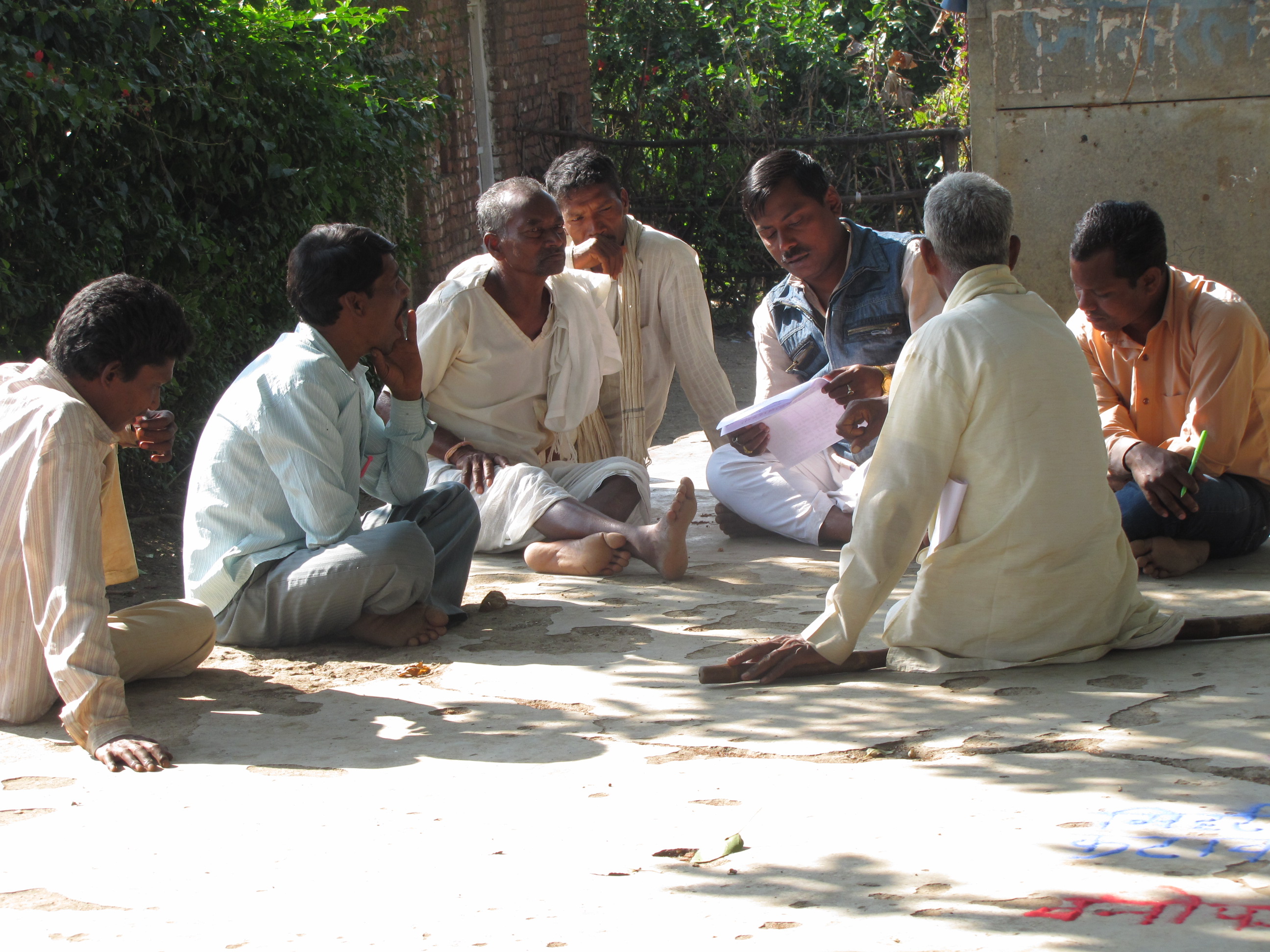

Village level institutional mechanism is essential for the protection of indigenous community conserved areas. A key aspect of FES's interventions in the villages of Mandla was the constitution of the Natural Resource Management Committees or Prakratik Sansadhan Prabandhan Samitis (PSPS). The samitis, were elected by the Gram Sabhas (adult meetings) and had universal membership ensuring that every resident of the village, despite his/her social or economic standing had a say in the functioning of the Samiti. Advising the gram Sabha on natural resource management and spearheading the process of developing rules and regulations around commons is one of the duties of the committee along with planning for natural resources and land use.
The PSPS received training on decentralized governance, perspective building on commons and planning. Village institutions arrived at a set of rules on using natural resources. Primarily, these rules included boundary rules, protection rules for forests and usage rules to some extent. Basic focus has been on controlling lopping and logging of trees. At some places, they have also come up with rules regarding sharing of fish produced in village pond, etc. for forests and usage rules to some extent.
The Panchayati Raj Act, Panchayat Extension to Scheduled Areas, Joint Forest Management and the National Biodiversity Act provide a legal framework. Gram Sabha (a meeting of all adults in the Panchayat area) also provide an enabling framework for village level conservation institutions.
The issues of conservation and resource governance were discussed with men and women separately, building an understanding of degradation of natural resources within the PSPS and then in the Gram Sabha.
The strengthened village institutions actively manage and conserve over 500 hectares of forest in the project region by overseeing the sustainable use of natural resources. A comparison with a forest that is not managed by a community indicates that a community managed forest shows 60 per cent more regeneration, 37 per cent more plant density and a 40 per cent higher number of plant species.
Strengthening of village institutions leads to articulation of village’s priorities and ensures mainstreaming of resource management and conservation. Strong village institutions are able to plan for the landscape, addressing issues like forest fragmentation and treat entire forest fringes as one unit, irrespective of the pattern of ownership. An institution therefore is a better unit in order to improve adaptive capacities of the communities, as it can address the ‘issue’ for the entire community and not only for single families.